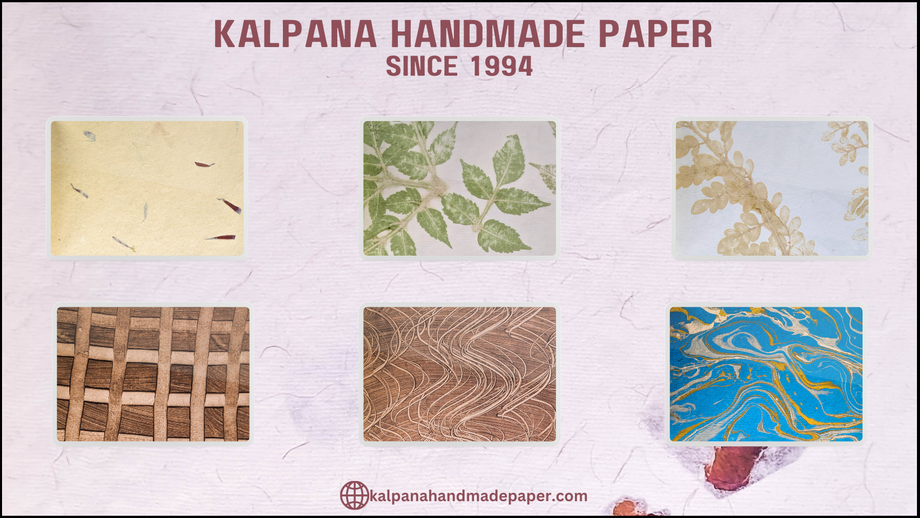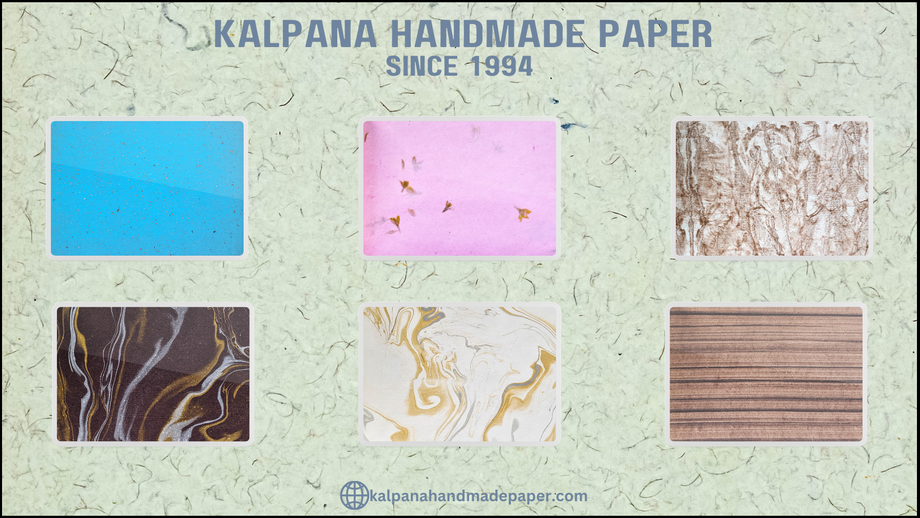In a world increasingly conscious of its environmental footprint, sustainable choices have become paramount. One such choice revolves around paper consumption and its impact on the environment. Recycled fiber content in paper is a critical factor in assessing its environmental friendliness. This blog post delves into the importance of recycled fiber content, its benefits, and how to identify and choose papers with higher recycled fiber content.
Understanding Recycled Fiber Content
Recycled fiber content refers to the proportion of reclaimed or reused fibers from previously manufactured paper products in a new paper product. These fibers can come from a variety of sources, including post-consumer waste (used paper products collected from households and businesses) and pre-consumer waste (scraps and trimmings from paper mills). The process of utilizing recycled fiber helps minimize the demand for virgin fibers, conserving natural resources and reducing waste.
The Environmental Impact of Recycled Fiber Content
Recycled fiber content in paper is a powerful tool in reducing the environmental impact of paper production. It embodies a range of benefits that significantly contribute to sustainability and a greener planet. Here are the key environmental impacts of incorporating recycled fiber content into paper production:
1. Conservation of Natural Resources
One of the foremost environmental benefits of using recycled fiber content in paper is the conservation of natural resources, particularly trees and forests. By reducing the demand for virgin wood pulp, recycled fiber content helps in preserving forests and habitats. Forests are vital carbon sinks and play a crucial role in mitigating climate change. Sparing trees by utilizing recycled fibers helps maintain biodiversity and ecological balance.
2. Energy and Water Savings
Manufacturing paper from recycled fiber requires significantly less energy and water compared to producing paper from virgin materials. The process of extracting and refining virgin wood pulp demands substantial energy inputs and substantial water usage. In contrast, recycling paper involves less energy-intensive processes, reducing the overall carbon footprint of paper production. Additionally, it alleviates the strain on water resources, a critical consideration in regions facing water scarcity.
3. Reduction in Pollution
The production of recycled paper generally generates fewer pollutants and greenhouse gases compared to making paper from raw materials. The traditional paper manufacturing process involves chemical treatments to break down wood fibers, leading to the release of various pollutants into the air and water. In contrast, recycled paper production involves less chemical processing, minimizing harmful emissions and pollution. This reduction in pollution contributes to cleaner air, water, and a healthier environment for all.
4. Lower Carbon Footprint
By utilizing recycled fibers in paper production, we contribute to reducing the overall carbon footprint associated with the paper industry. The energy-intensive processes involved in creating virgin wood pulp are bypassed, leading to lower greenhouse gas emissions. The carbon footprint reduction is a crucial step towards achieving global climate goals and fostering a sustainable future.
5. Landfill Diversion
Recycled fiber content aids in diverting paper waste from landfills. When paper products are recycled, they are given a new life, reducing the burden on landfill sites. Paper in landfills can release methane, a potent greenhouse gas, into the atmosphere. Recycling paper ensures a more responsible waste management approach and reduces the environmental impact associated with waste decomposition
Categories of Recycled Paper
Recycled paper plays a pivotal role in promoting sustainable practices within the paper industry. The categorization of recycled paper is based on the source and percentage of recycled fiber content. Understanding these categories helps consumers and businesses make informed choices that align with their sustainability goals. Here are the primary categories of recycled paper:
1. Post-Consumer Recycled (PCR) Content
Post-consumer recycled (PCR) content refers to paper made from a significant proportion of recycled fibers that have completed their lifecycle as a consumer product. These fibers come from used paper products collected from households, businesses, and recycling programs. Post-consumer recycled paper is a key player in recycling efforts, diverting waste from landfills and reducing the need for new raw materials.
Advantages: Waste Diversion: PCR content helps divert paper waste from ending up in landfills.
Resource Conservation: Using post-consumer recycled fibers conserves trees and reduces the demand for virgin pulp.
2. Pre-Consumer Recycled Content
Pre-consumer recycled content involves using fibers that are recycled before they reach consumers. These fibers come from scraps, trimmings, and other by-products generated during the manufacturing and printing processes within the paper industry. The utilization of pre-consumer recycled fibers promotes efficient resource utilization within the paper production cycle.
Advantages: Waste Reduction: Utilizing pre-consumer recycled fibers decreases waste during the manufacturing process.
Resource Efficiency: It maximizes the use of resources within the paper manufacturing industry.
3. Mixed Sources
Mixed source recycled paper combines both post-consumer and pre-consumer recycled fibers. This category represents a balanced approach, utilizing recycled fibers from various sources to create a sustainable and environmentally friendly paper product. By blending both post-consumer and pre-consumer recycled fibers, this category contributes to comprehensive recycling initiatives.
Advantages: Optimal Recycling: Utilizes a mix of recycled fibers, making efficient use of both post-consumer and pre-consumer materials.
Environmental Benefit: Reduces waste and minimizes the reliance on virgin raw materials.
How to Identify Recycled Fiber Content
Making informed decisions regarding the recycled fiber content of paper products is crucial for promoting sustainability and responsible consumption. Fortunately, there are several ways to identify and verify the recycled fiber content in paper. Here's a guide on how to do so effectively:
1. Recycled Content Certification:
Look for prominent certifications that indicate the presence and percentage of recycled content in the paper. These certifications are provided by reputable organizations committed to sustainable forestry and paper production. Three well-known certifications include:
a. Forest Stewardship Council (FSC):
FSC is a globally recognized certification that ensures the paper comes from responsibly managed forests and includes recycled material.
Look for the FSC logo or label on the paper product, indicating it meets FSC standards for recycled content.
b. Programme for the Endorsement of Forest Certification (PEFC):
PEFC is another reputable certification ensuring the responsible sourcing of wood and the inclusion of recycled materials in paper products.
Similar to FSC, look for the PEFC logo or label to verify recycled content in the paper.
c. Sustainable Forestry Initiative (SFI):
SFI certification focuses on responsible forest management and may also include recycled content requirements.
Keep an eye out for the SFI logo or label on the paper product for confirmation of recycled fiber content.
2. Recycled Paper Logos:
Look for specific logos or symbols indicating the recycled content of the paper product. These logos provide a quick reference to the proportion of recycled fiber present.
Common logos include: Recycled Paper Symbol: This symbol typically depicts arrows in a circular motion, indicating recycling, and often mentions the percentage of recycled content in the paper.
3. Read the Fine Print:
Always read the product description or packaging details to find specific information about the recycled fiber content. Manufacturers often display the percentage of recycled fiber content, enabling consumers to make informed choices based on their sustainability preferences.
Additional Tips: Contact the Manufacturer: If you're unable to find sufficient information on the packaging, don't hesitate to reach out to the manufacturer directly. They should be able to provide you with the details regarding the recycled fiber content of their paper product.
Online Resources: Utilize the internet to access additional information about the paper brand, its sustainability practices, and the recycled fiber content of its products.
Advantages of Using Papers with Higher Recycled Fiber Content
Using paper with higher recycled fiber content offers a plethora of benefits that extend beyond just being eco-friendly. These advantages encompass environmental, economic, and social aspects, making it a wise choice for both individuals and businesses committed to sustainable practices. Here are the key advantages:
1. Environmental Benefits:
a. Resource Conservation:
Utilizing recycled fiber content significantly reduces the demand for virgin wood pulp. This, in turn, helps in conserving forests and habitats that would otherwise be harvested for paper production.
b. Energy and Water Efficiency:
The manufacturing process for recycled paper consumes considerably less energy and water compared to producing paper from raw materials. This efficiency contributes to reduced greenhouse gas emissions and a lower carbon footprint.
c. Pollution Reduction:
Creating paper from recycled fiber generates fewer pollutants and greenhouse gases. Reduced chemical usage and lower energy requirements contribute to cleaner air and water, benefiting both human health and the environment.
2. Waste Reduction:
a. Diverting Waste from Landfills:
Utilizing recycled fibers helps divert paper waste from ending up in already burdened landfills. Recycling paper gives it a new life and prevents it from contributing to environmental problems associated with landfills.
b. Circular Economy Promotion:
Incorporating recycled fiber into paper production contributes to a circular economy where materials are continuously reused and recycled. This reduces the pressure on raw material extraction and promotes sustainable consumption and production patterns.
3. Consumer Responsibility:
a. Educating and Encouraging Sustainability:
Opting for papers with higher recycled fiber content encourages consumers to be more environmentally aware and make responsible choices. It promotes a shift towards sustainable consumption patterns and influences others to do the same.
b. Supporting Sustainable Brands:
Choosing paper products with higher recycled fiber content supports brands that prioritize sustainability. Consumer demand for such products drives the market towards a greener direction, encouraging more businesses to adopt sustainable practices.
c. Personal Empowerment:
Making a conscious choice to use recycled paper allows individuals to actively contribute to environmental conservation. It gives a sense of empowerment, knowing that one's actions align with a more sustainable and responsible way of life.
Overcoming Challenges in Adopting Recycled Fiber Content
The adoption of recycled fiber content in paper products is a critical step towards a sustainable future. However, certain challenges, such as cost considerations and perceived quality issues, can deter its widespread adoption. Addressing and overcoming these challenges is essential to encourage the shift towards recycled fiber content. Here’s how to navigate these challenges effectively:
1. Cost Considerations:
a. Understanding Long-Term Savings:
Educate consumers and businesses about the long-term environmental and economic benefits of using recycled paper. Emphasize the reduced strain on natural resources, energy savings, and waste diversion, showcasing the overall cost-effectiveness of recycled paper in the long run.
b. Government Incentives and Subsidies:
Advocate for government policies that provide incentives, tax breaks, or subsidies for using recycled materials. Financial support can bridge the cost gap, making recycled paper a more financially viable option for both consumers and businesses.
c. Economic Scale and Demand Generation:
Encourage larger demand for recycled paper through awareness campaigns and public initiatives. As demand increases, economies of scale come into play, leading to potential cost reductions in the production of recycled paper.
2. Perceived Quality:
a. Education and Awareness:
Educate consumers, businesses, and industries about the advancements in technology that have significantly improved the quality of recycled paper. Dispel misconceptions and showcase examples of high-quality products made from recycled fibers.
b. Quality Assurance Standards:
Establish and promote quality assurance standards specifically for recycled paper products. These standards can reassure consumers about the quality and performance of recycled paper, addressing their concerns.
c. Collaboration with Manufacturers:
Collaborate with paper manufacturers to invest in research and development aimed at enhancing the quality of recycled paper. Innovations in processing and refining recycled fibers can lead to products that rival or even surpass the quality of non-recycled paper
Conclusion
Understanding and choosing paper with high recycled fiber content is an essential step in promoting sustainability and responsible consumption. By opting for recycled paper, we contribute to the conservation of natural resources and the preservation of our environment. Making informed choices regarding the products we use can have a significant positive impact on our planet and future generations.


